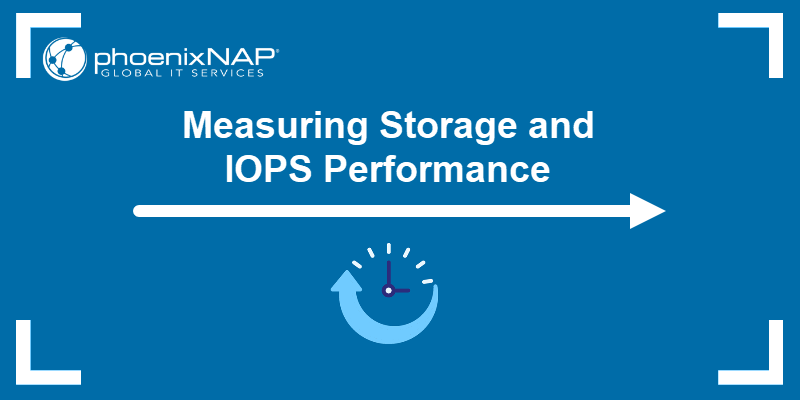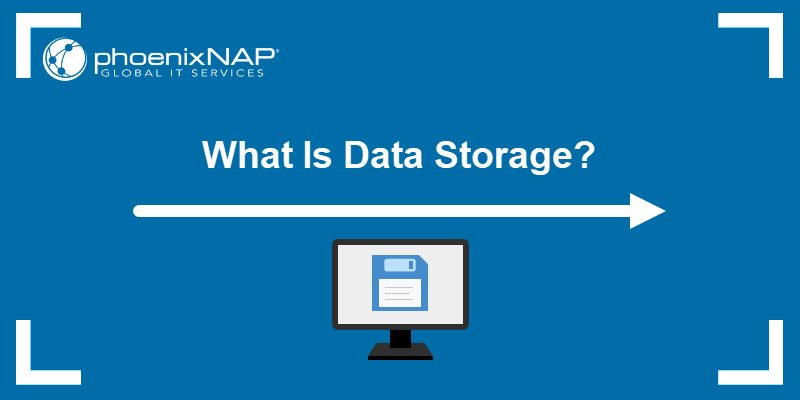SSDs are a popular data storage option for computing environments. Their faster storage access speeds and lack of moving parts make them better than HDDs, especially for systems that perform many read/write operations.
Many SSD technologies are available today, and finding a suitable hardware solution for your circumstances can be challenging. NVMe and M.2 are popular SSD technologies with different purposes.
This article provides an in-depth comparison between NVMe and M.2.
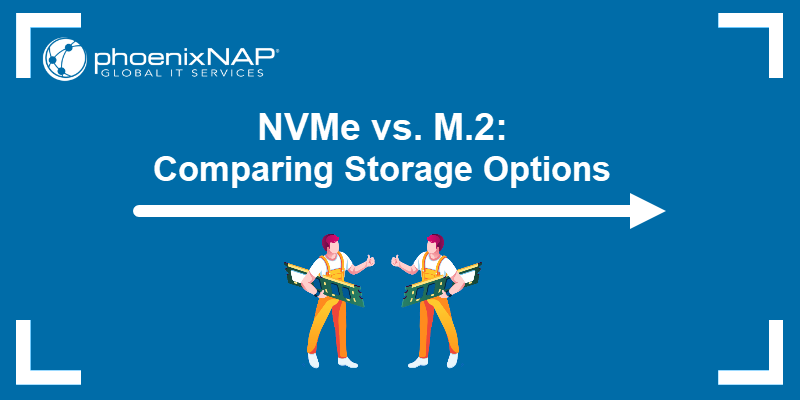
What Is NVMe?
NVMe (Non-Volatile Memory Express) is a storage access and communication protocol for SSDs and flash storage devices. It uses a direct connection to the CPU via a PCI Express interface, bypassing the SATA interface associated with slower drives.
Compared to traditional storage solutions, NVMe significantly reduces latency and increases Input/output Operations Per Second (IOPS). It is designed as a high-performance and non-volatile storage solution to optimize data transmission and system performance.
Note: Not sure if your storage is performing well? Learn how to measure storage and IOPS performance on Windows, Linux, and vCenter in our in-depth guide and see how to collect storage data.
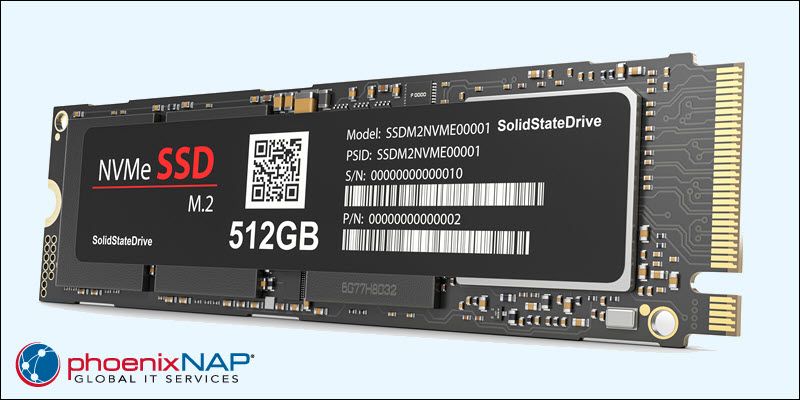
NVMe Features
NVMe offers numerous benefits for storage solutions. Some key features of NVMe technology include:
- High throughput and low latency. NVMe provides high-speed data transfer rates and lowers data access delays. The PCI Express interface enables NVMe SSDs to achieve faster data read/write speeds than traditional storage interfaces. These factors result in improved system performance and responsiveness.
- Parallel processing. NVMe supports parallelism and processes multiple commands and data transfers simultaneously. It maximizes the use of a multi-core CPU environment, resulting in a smoother user experience.
- Scalability. The architecture behind NVMe is flexible and future-proof. NVMe SSDs simplify interoperability between different systems and easily integrate with newer storage media types.
- Data protection. NVMe is a secure data storage solution with many data protection functionalities, including error detection, correction mechanisms, and end-to-end data integrity checks. These features safeguard data from silent data corruption and data loss.
- Form factor flexibility. NVMe SSDs have various form factors, including M.2, add-in card, and U.2. This versatility allows NVMe to be used in various environments, ranging from small-scale desktops to enterprise-level data centers.
NVMe Use Cases
Due to its high performance, scalability, and low latency, NVMe has use cases across various industries. Some significant uses for NVMe include:
- Enterprise storage. NVMe SSDs are often found in enterprise storage solutions, data centers, and cloud environments. Low latency and increased IOPS make NVMe an ideal solution for demanding and variable workloads in enterprises.
- High-performance computing (HPC). Specialized HPC architecture uses NVMe SSDs to provide the parallel data processing power required for HPC applications. Due to the massive workloads, these systems are deployed on dedicated HPC servers and use several NVMe SSDs to handle high-computing requirements efficiently.
- Artificial intelligence (AI) and machine learning (ML). As AI and ML work with large datasets. NVMe is a reliable storage technology that provides fast data access required for training algorithms, real-time data analytics, and performance improvements.
- Databases. NVMe technology accelerates database performance. Database servers with NVMe SSDs provide speed boosts to database operations, query processing, and data access. Both SQL and NoSQL databases benefit from the optimized performance.
- Containers and VMs. NVMe SSDs are suitable for virtualized environments (Hyper-V, VMware) and containerized environments (Kubernetes, Docker). The boost from NVMe improves storage performance and migration speed.
- IoT and edge computing. NVMe SSDs are perfect for handling real-time processing at the network edge. Due to the low-latency data retrieval and storage required for these environments, the technology is increasingly found in edge servers and IoT devices.
Note: phoenixNAP offers many BMC server types that utilize NVMe technology and cover all previously listed use cases. Choose between traditional dedicated servers or an automation-oriented bare metal cloud server.
What Is M.2?
M.2, known as Next Generation Form Factor (NGFF), is a small form factor and specification standard for internal computer expansion cards. It connects SSDs and other cards (WiFi, Bluetooth) through the M.2 interface, often found in smaller devices.
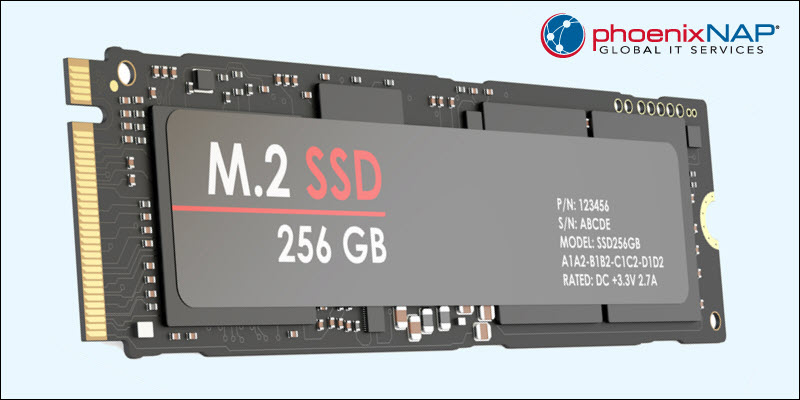
M.2 SSDs connect to the motherboard through an M.2 interface and do not require cables. If a motherboard does not have the M.2 interface, M.2 SSDs can utilize the PCIe slot through an adapter. M.2 is power efficient, small, and fast compared to other SSD solutions.
M.2 Features
Several key features make M.2 a popular storage technology. The main characteristics include:
- Small form factor. The compact form factor enables the use of M.2 in thin and small devices. Although small, it does not sacrifice storage capacity or performance.
- Performance improvement. M.2 SSDs utilize PCIe slots and the NVMe protocol to achieve high-speed data transfer rates. The performance increases are noticeable through faster booting, reduced program loading time, and data transmission.
- Adaptability. M.2 supports various SSD types, including SATA and NVMe. The choice between different SSD types depends on the budget and performance specifications. M.2 is also simple to install if the compatible slot is available on the motherboard.
- Scalability. M.2 has many storage capacities, ranging from 250GB to 8TB. The choice depends on the use case: a smaller capacity is suitable for storing operating systems, while a larger capacity is better for media storage.
M.2 Use Cases
Due to their small size, M.2 SSDs find application in many different computing environments. Some notable use cases include:
- Ultrabooks, laptops, and desktops. Thin and lightweight devices use M.2 SSDs due to their high performance, compactness, and energy efficiency. They improve the overall UX through fast boot times and responsiveness while maintaining portability.
- Datacenters and servers. M.2 SSDs are a high-performance storage solution suitable for enterprise-level databases, virtualization environments, and caching. The low latency improves server response times and offers fast data access.
- Embedded systems. M.2 SSDs are suitable for compact environments, such as industrial-level embedded applications and IoT devices. They are reliable and space-efficient storage solutions.
- Edge computing and networking. Networking and edge computing applications use M.2 SSDs to enable fast data processing at the network edge. The storage solution enhances edge devices and services through real-time analytics, caching, and fast processing speeds.
NVMe and M.2 Are Not Competing Technologies
NVMe and M.2 are grouped due to their association with SSD technology. However, the two solutions are not competing technologies but rather complement one another:
- NVMe is a storage protocol for flash-based storage devices, including SSDs. It leverages the PCI interface and defines an efficient data transfer protocol.
- M.2 is a form factor specification that describes an expansion card's physical and electrical features. It provides a platform for integrating various devices into computing systems, including NVMe SSDs.
NVMe and M.2 work together to create a powerful and efficient storage. Each serves a distinct purpose and provides different technological solutions for SSD-based storage.
Using NVMe and M.2 Together
Using NVMe and M.2 together is a powerful combination that maximizes the benefits of both technologies. Integrating NVMe SSDs into an M.2 compact form factor results in excellent storage performance while maintaining a small footprint.
Joining these two technologies creates a versatile and high-performance storage solution. The combination opens up a wide application range across many industries, including high-performance computing, gaming, data center servers, and industrial devices.
NVMe's high-speed capabilities and M.2's small size make the combination a compelling choice for many use cases.
Conclusion
After reading this article, you know the differences between NVMe and M.2 storage technologies. Using these technologies together produces the best results.
Next, read more about an enterprise-level NVMe storage solution: HPE Alletra All-NVMe.

